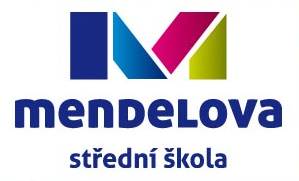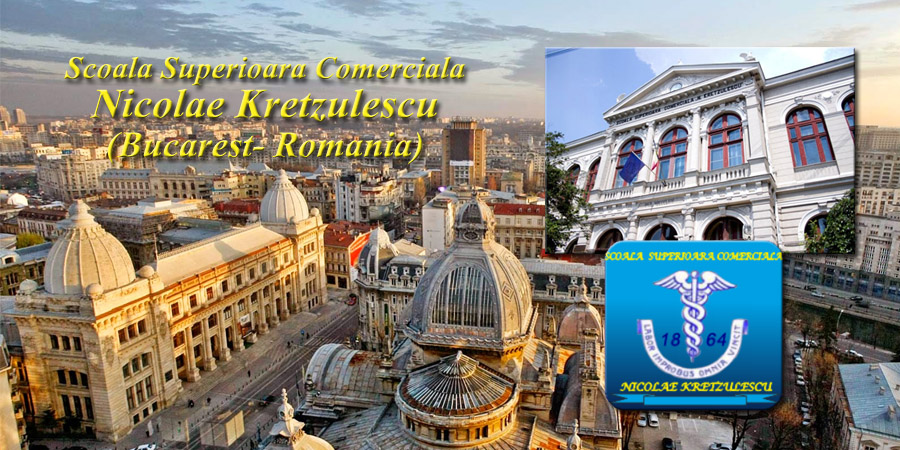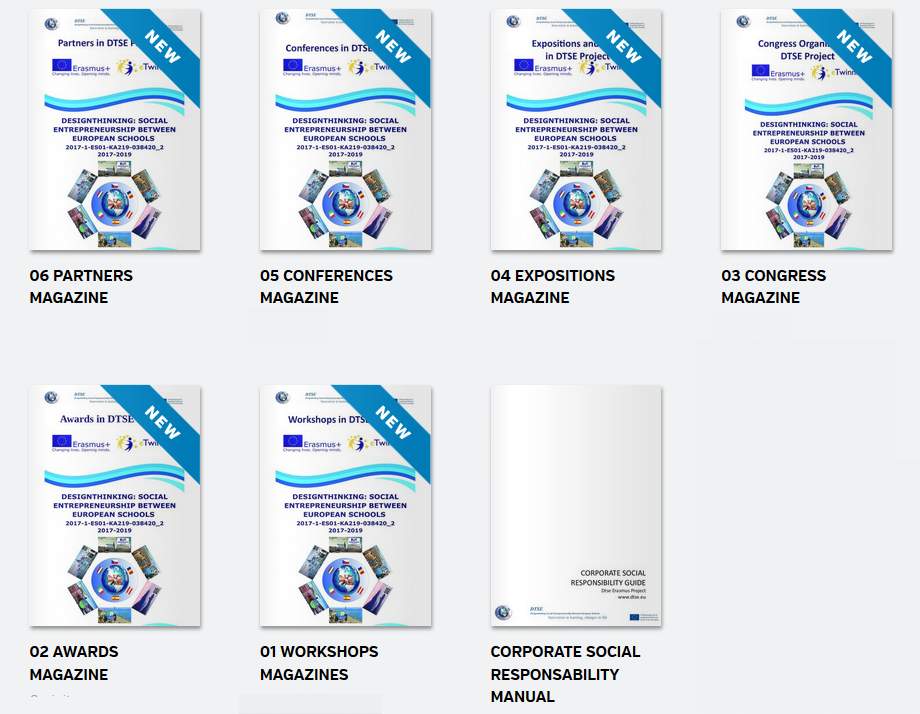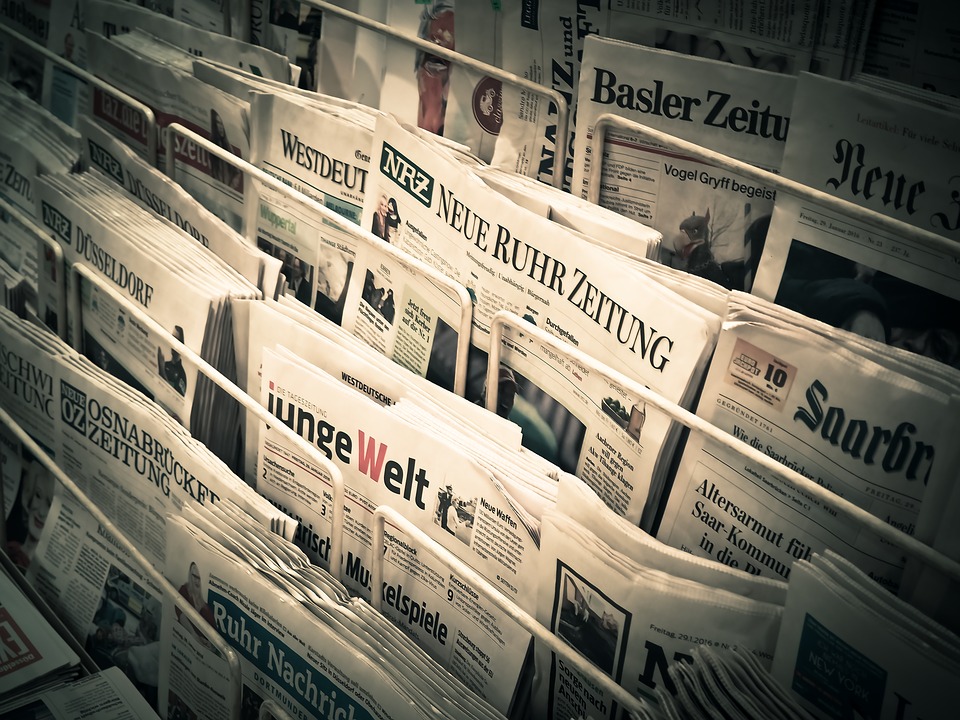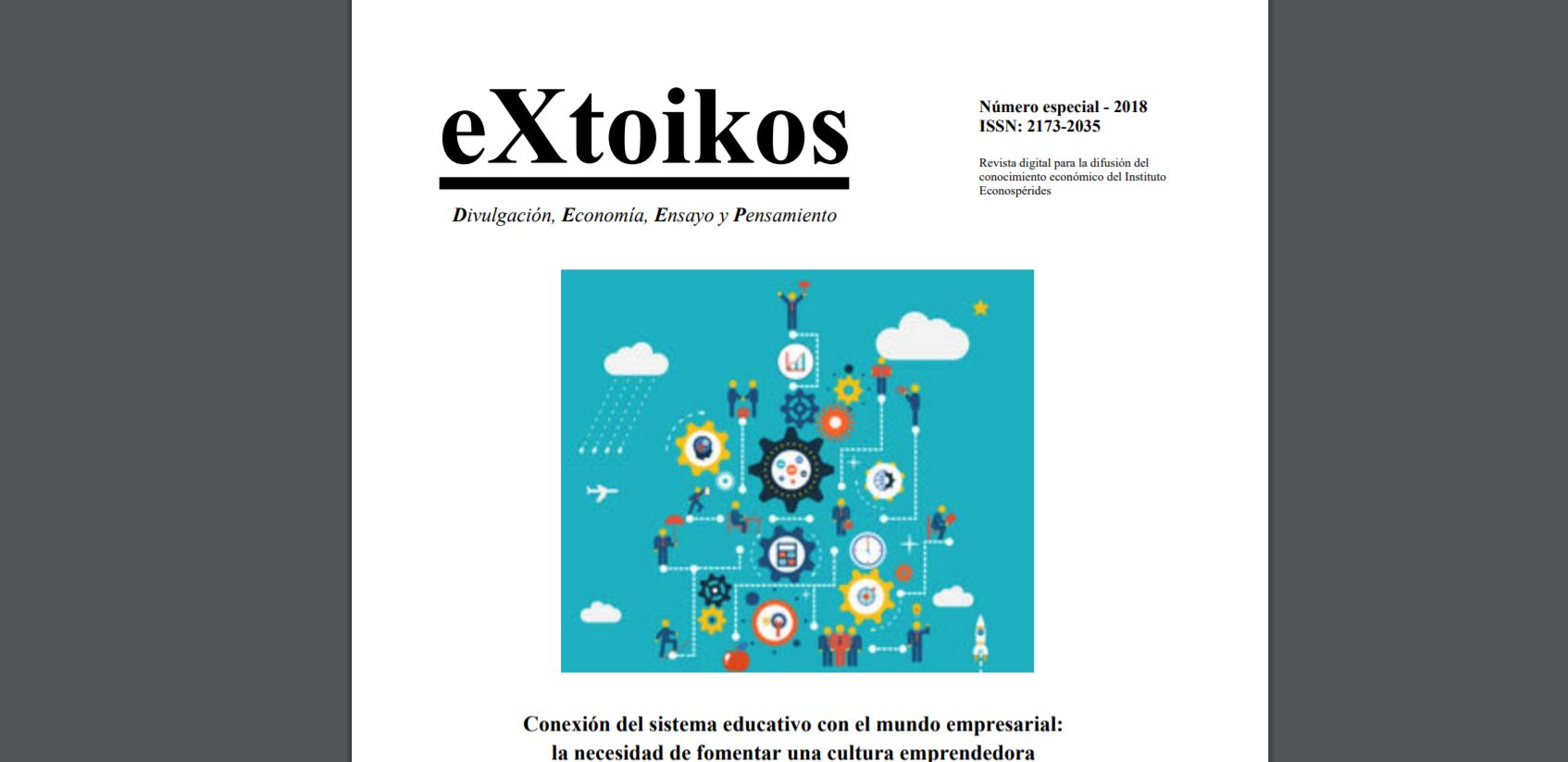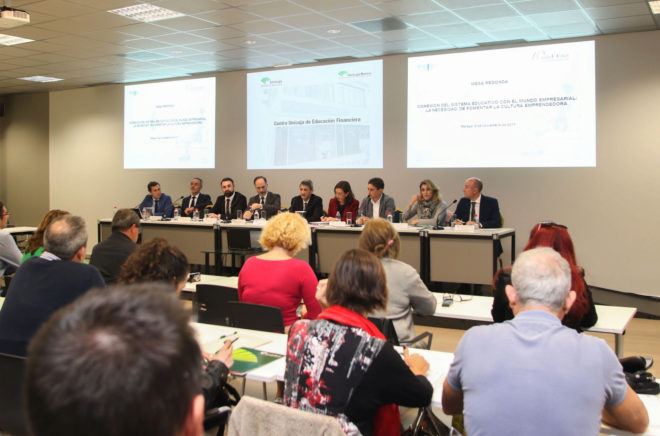European Quality Label Award for schools
IES Playamar school and the DTSE Erasmus project have been awarded with the European Quality Label Award for schools.
European Quality Label Award for schools are granted to schools with excellent Erasmus projects. They indicate that the project has reached a certain national and European standard.
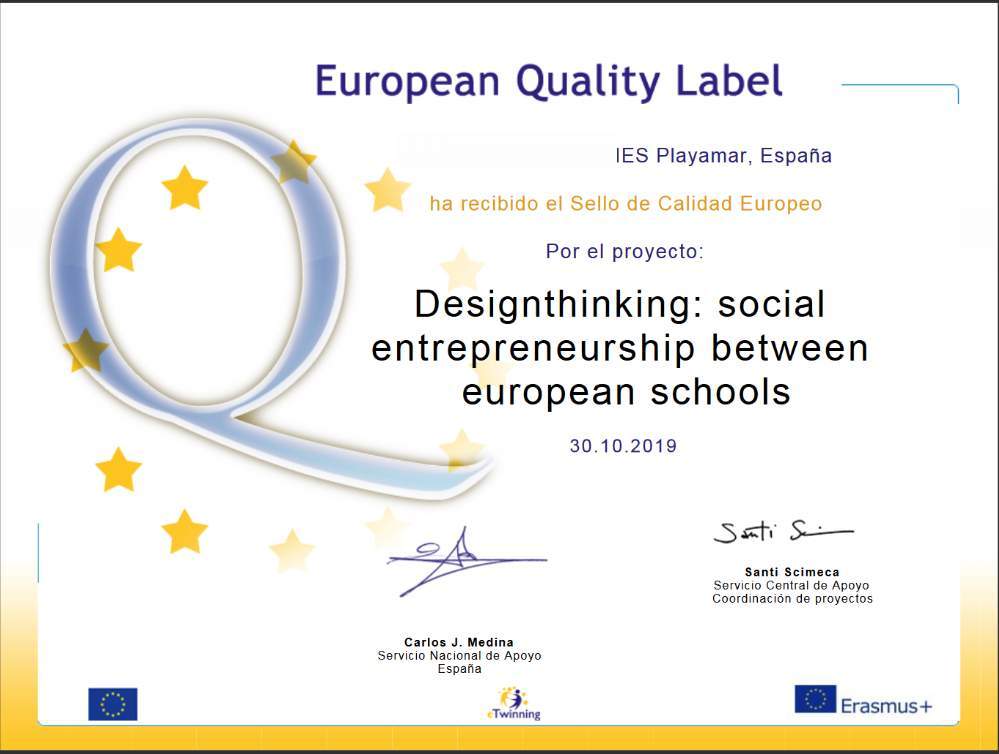
Thanks to all of you, teachers and sturdents, who have worked to archieve this award .
DTSE web Stats
In total, 243,877 interactions were counted during the completion of the dtse.eu project
Data Origin
These data have been made from the record of visits provided by Strato our hosting which can be consulted in csv here:
raw visits stats in dtse.eu and ecie.eu or here http://dtse.eu/wp-content/uploads/2019/10/raw-visits-stats-in-dtse.eu-and-ecie.eu_.7z
This document can be downloaded in pdf
Interations Web Stats in English visitas dtse dtse stats English
Inteacciones y estadisticas en Castellano visitas dtse
Briefing :
24859 visits to the root of the dtse.eu website and 216723 visits to the entire website
6644 visits to the root of the ecie.eu website and 27154 visits to the entire website
in total 216723+ 27154 = 243,877 interactions
Year and Monthly Stats of Dtse.eu
In the following table you can see the visits by months and years of the dtse.eu and ecie.eu web project and a graph with its evolution

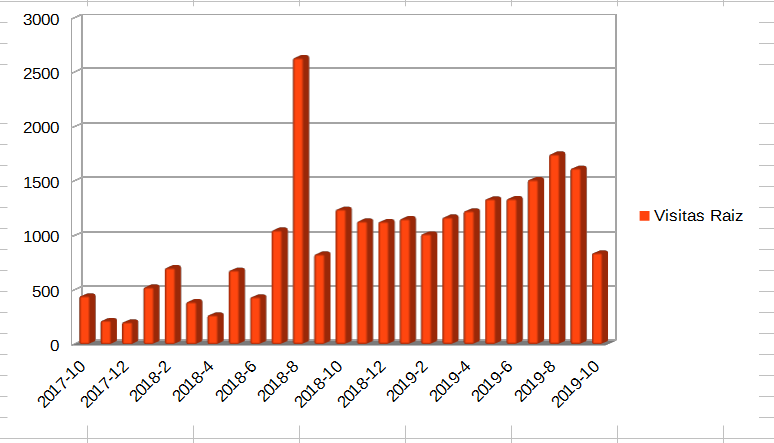
Year and Monthly Stats of ECIE.eu
In the following table you can see the visits by months and years of the ecie.eu web project and a graph with its evolution
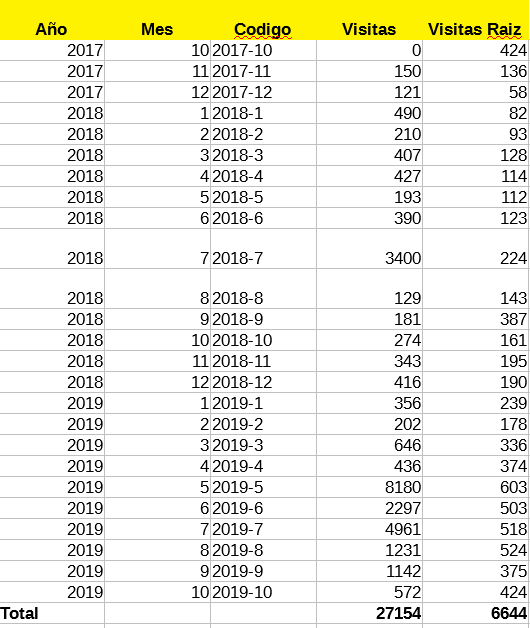

Austrian Digital Business Award in April 2019
One of the dtse of social entrepreneurship Projects in the Hak High school won the second price in the digital entrepreneurship projects in the Austrian National Contest “Austrian Digital Business Award in April 2019”.
HAK Weiz won the second place with the project “Beesmart“. IT students developped a scale for beehives which shows changes in weight in an app as well as temperature and wind.
So the beekeeper can monitor his beehives from home.

Presentation of the project.
eTwinning Quality Label Award
Our Site and activities in Etwinning Platform have been awarded with the eTwinning Quality Label Award.
https://twinspace.etwinning.net/53994/home
eTwinning Quality Labels are granted to teachers with excellent eTwinning projects. They indicate that the project has reached a certain national and European standard.
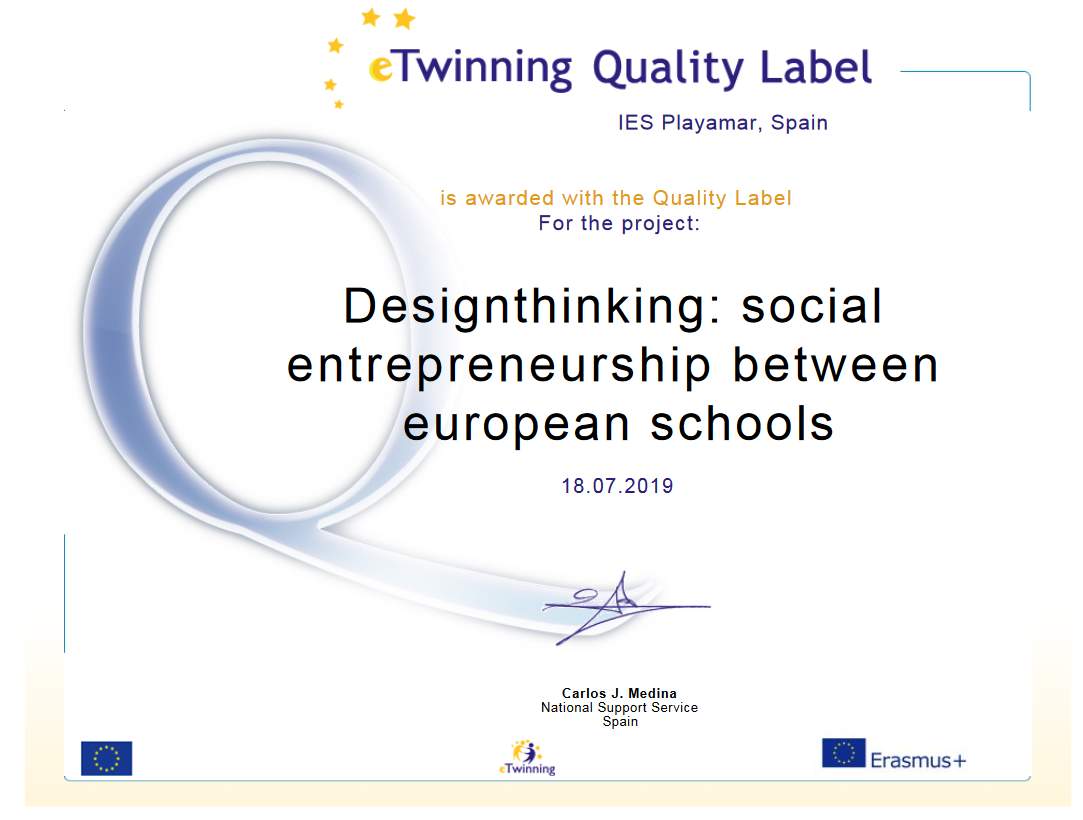
Thanks to all of you, teachers and sturdents, who have worked to archieve this award .
Meetings Evaluations
Here you can download the Evaluations of the meetings.
 EVALUATION COORDINATORS DTSE C1 MEETING SPAIN
EVALUATION COORDINATORS DTSE C1 MEETING SPAIN
EVALUATION TEACHER DTSE C1 MEETING SPAIN
 EVALUATION TEACHER DTSE C2 MEETING HUNGARY
EVALUATION TEACHER DTSE C2 MEETING HUNGARY
 EVALUATION TEACHER DTSE C3 MEETING BOSA2
EVALUATION TEACHER DTSE C3 MEETING BOSA2
 EVALUATION TEACHER DTSE C4 MEETING BUCHAREST – RUMANIA2
EVALUATION TEACHER DTSE C4 MEETING BUCHAREST – RUMANIA2
Czech Students experience DTSE Erasmus+
Czech Students experience in DTSE Erasmus+ Project
Romanian Students experience DTSE Erasmus+
Romanian Students experience DTSE Erasmus+ Project Alin S. M.
Romanian Students experience DTSE Erasmus+ Project Cristina M.D.
Romanian Students experience DTSE Erasmus+ Project Vlad B.
Romanian Students experience DTSE Erasmus+ Project Henri V. D.H.
Romanian Students experience DTSE Erasmus+ Project Alex M.
Industrial Machinery Start-up
Technology evolves at an accelerated pace and companies must adapt to changes as soon as possible to generate a source of competitive advantage. The digitalization of the industry is a revolution that will change (and in fact is already doing) the paradigm of industrial manufacturing, work environments and the way of relating to both suppliers and customers.
We are at the doors of the 4th industrial revolution (Industry 4.0) and our education system must evolve to properly train future professionals.
New engineers and skilled workers will have to challenge this new era, using their skills to achieve more efficient management of resources, improve all production processes and increase profitability.
In the era of industry 4.0 and digital transformation, all young people will have to develop their talent, to foster a broad development of skills, attitudes and experiences both digital and innovation, entrepreneurship and creativity that prepare them competently for their professional future and favor your employability.
From this point of view, we find it necessary to give our students sufficient tools so that their integration into the workplace is successful and valuable for companies.
With the idea of taking another step, in the development of our project, we believe it is necessary to merge two technologies with great demand in the industry, Robotics and Pneumatics. With this, we managed to climb one more step and provide our students with the necessary skills to robotize an industrial silver.
These contents are included in the technology curriculum in 4th of that and in Industrial Technology in high school.

2. Objective and justification of the project.
“Every day, in the media, there is some news related to climate change, energy saving, depletion of raw materials, the need to recycle, …
What can we contribute to help solve this great problem that affects our entire planet? ”
This was the introduction with which a debate was opened in technology class and whose purpose was for students to become aware that we only have one planet and we must take care of it.
Many ideas came up, very good, but we focused on the importance of recycling.
The idea of manufacturing a machine to help recycle cans of soft drinks using the knowledge that students have of pneumatics and robotics was raised, and to study their feasibility to manufacture and install it, in various centers accompanied by a decalogue of Reasons why we should recycle.
With the development of this project it is intended that our students be able to:
Design, implement and program robotic systems.
Design and implement pneumatic circuits.
Encourage and actively participate in the recycling of containers.
Raise awareness about the need for energy saving and its impact on the environment.
Promote entrepreneurial culture.
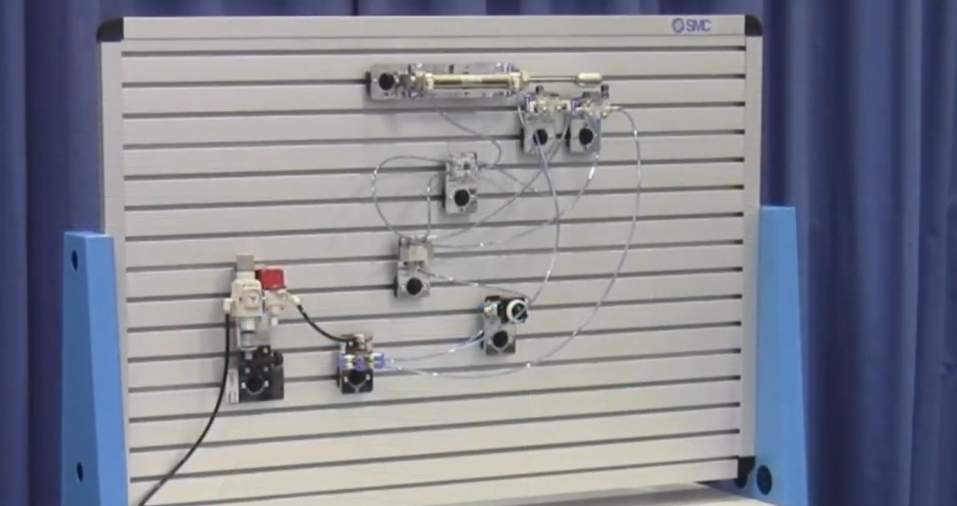
The knowledge necessary to develop a project of this type is present in the curriculum of technology (in 4th of that) and industrial technology 1.

The contents treated in 4th of that, related to the project are:
Block 4: Control and robotics.
4.1. Automatic systems, characteristic components of control devices.
4.2. Basic digital and analog sensors.
4.3. Actuators
4.4. Design and construction of robots.
4.5. Degrees of freedom.
4.6. Technical characteristics.
4.7. The computer as an element of programming and control.
4.8. Basic programming languages.
4.9. Architecture and basic characteristics of control hardware platforms, advantages of free hardware over proprietary.
4.10. Application of controller cards or control hardware platforms in experimentation with designed prototypes.
4.11 3D design and printing. MAKER culture.
Block 5: Pneumatic and hydraulic.
5.1. Analysis of hydraulic and pneumatic systems.
5.2. Components
5.3. Symbology
5.4. Physical principles of operation.
5.5. Simple assemblies
5.6. Use of simulators in the design of basic circuits.
5.7. Application in industrial systems.
For the 1st year of high school the following contents are treated:
Block 4. Programming and robotics.
4.1. Programming software
4.2. Flowchart and standardized symbology.
4.3. Variables: concept and types.
4.4. Mathematical and logical operators.
4.5. Structured programming: functions.
4.6. Control structures: Loops, counters, conditionals, etc.
4.7. Sensors and actuators. Types.
4.8. Inbound treatment
4.9. Programming of a hardware platform for handling a robot or control system.
Block 5. Technological products: design and production.
5.1. Design processes and product improvement.
5.2. Phases: study, development, planning.
5.3. Project development and product manufacturing. Phases: CAD / CAM / CAE.
5.4. Standardization in design and production.
5.5. Quality management systems.
Block 6. Manufacturing procedures.
6.1. Manufacturing techniques and procedures.
6.2. New technologies applied to manufacturing processes.
6.3. 3d print.
The main objective of this project is that our students become aware of the amount of energy and raw materials necessary to create a container and as with the recycling of these we can significantly reduce energy consumption.
To help with recycling, our students are asked to design and build a machine capable of compacting soda cans for storage and subsequent transportation to a recycling center.
The idea is to start from a very basic but functional model that will be improved until it is equipped with all the functions and safety measures necessary for safe use in schools.
This work methodology, known as an incremental model, allows students to see results quickly which motivates them to continue advancing in their objectives.
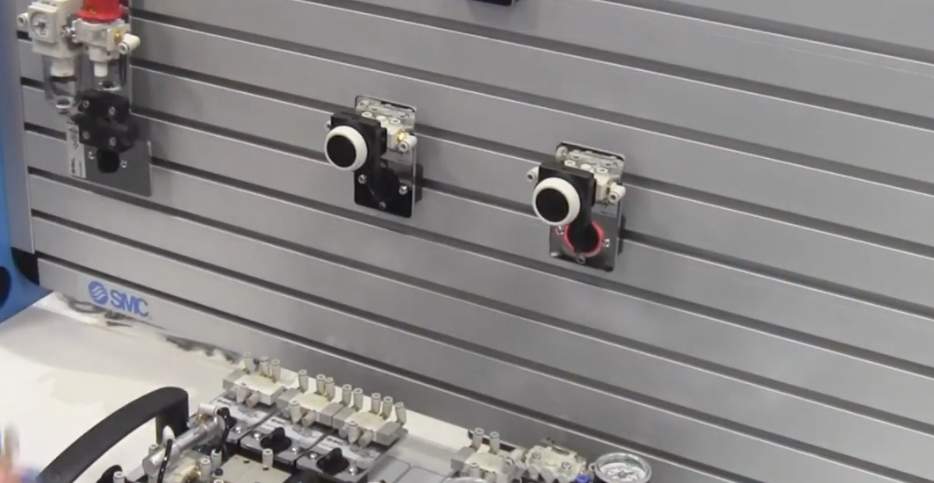
3. Basic example
For information purposes, since we want the students to design the machine, a scheme of a pneumatic circuit is provided that performs the function we are looking for.
This circuit needs to be improved, incorporating sensors and intelligent control through Arduino. These improvements will provide the model with safety measures that make its use suitable in a school.
Basically it is a single acting pneumatic cylinder controlled by a 3/2 valve with pilot operation via push-button and spring return.
Arduino will check if there are cans to crush, using ultrasound or infrared sensors, and actuate the cylinder through the use of relays.
In addition, the machine must have protective measures so that its use does not pose any risk.
4. Material necessary for the development of the project.
Once the circuit is designed and tested in virtual simulators, we need to assemble a prototype. For this, all pneumatic components that are normally supplied with pneumatic trainers (Cylinders, distribution valves, Compressor, Maintenance unit, solenoid valves… ..) will be used.
We show in the following images the necessary elements to assemble different designed prototypes.
As an element of control, an Arduino board and various sensors and actuators will be used. These elements will allow us to control the circuit and provide them with the necessary security measures.
The concretion of all the necessary material will depend on the designs that are made, due to this, it is necessary to have a complete equipment for the practices of pneumatic circuits in addition to various Arduino boards, sensors and actuators.
5. Methodology.
The methodology we are going to use is the Project Method.
Starting from a problem, students must seek information and propose several ideas that can solve it, once discussed in a group, the best idea is chosen and developed.
A first prototype is designed, and it is planned how we will build it, for this, a list of necessary materials and tools is made as well as the order of the operations to be carried out and who will perform them.
Once our prototype is built, we evaluate it and check if it solves our problem.
As you can see, the project method gives students the necessary tools to develop a product, which solves a problem or satisfies a need. All this knowledge can be extrapolated to everyday life and are highly valued in the workplace.
DTSE Magazines
We have recopilated most of the information generated in the DTSE Project in this web and in several Magazines which shows the most important aspects of the Project
01 Workshops in the DTSE Project Magazine
02 Awards in the DTSE Project Magazine
03 Congress organized by the DTSE Project Magazine
04 “Expositions and fairs where have participated the DTSE Project” Magazine
05 Conferences organized by the DTSE Project Magazine
06 “Partners who have collaborated with the DTSE Project” Magazine
DTSE in Mass Media
One of the more important archivements in the DTSE Project have been the newspapers reviews.
Thanks to the importance of ours partners and the good work of DTSE Team , more than 120 references in national/ international press have been released.
C1 Mobility in Mass Media
- Erasmus project DTSE in “20minutos” newspaper.
- C1 DTSE Activity in “La Opinion de Malaga” Newspaper.
- Diffusion in “El Mundo” Newspaper
- DTSE in “El Economista” Newspaper.
- DTSE in “La opinion de Malaga”
- DTSE in la Razón Newspaper
- We are in the Vanguardia Diary
- DTSE Article in “El Economista” Newspaper
- DTSE Article in “20 Minutos” Newspaper
Interviews on Torremolinos tv
- Torremolinos tv Students interview
- Torremolinos tv Coordinators interview
- Torremolinos tv Teachers interview
Bucharest Meeting and visit to the romanian stock exchange in the mass media
- http://www.bvb.ro/AboutUs/MediaCenter/PressItem/Ring-the-Bell-with-Global-Money-Week/4949
- https://asfromania.ro/en/press-releases/media-releases/6669-organized-events-audit-by-the-asf-within-global-money-week-2019
- Bucharest meeting in top educative romanian magazine
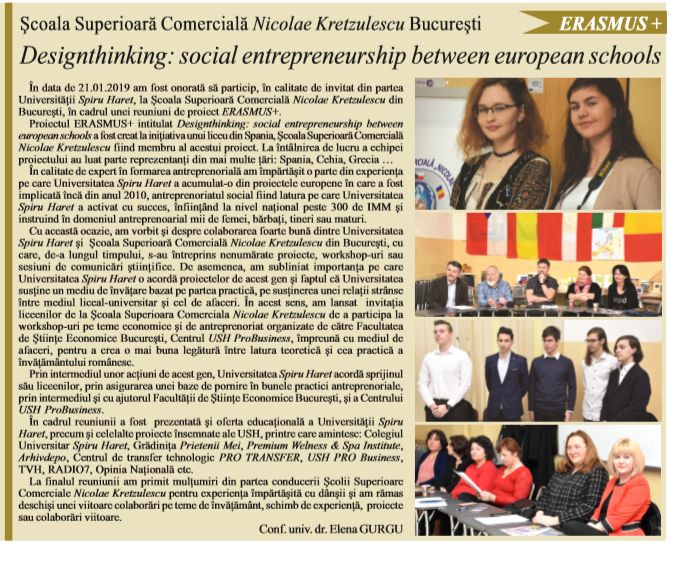
https://www.calameo.com/books/005795684361cad64270c
Ecie (DTSE) and Edufinet Signs an Collaboration Agreement
Ecie (DTSE) and Edufinet Signs an Collaboration Agreement
- https://www.europapress.es/andalucia/malaga-00356/noticia-centro-ecie-adhiere-proyecto-edufinet-unicaja-firma-acuerdo-promover-educacion-financiera-20190313123234.html
- https://noticiasbancarias.com/bancos/19/03/2019/el-centro-ecie-se-adhiere-al-proyecto-edufinet-de-unicaja/177517.html
- https://www.futuroafondo.com/es/educacion-financiera/ecie-se-adhiere-al-proyecto-edufinet-para-promover-educacion-financiera-de
- https://www.vidaeconomica.com/2019/03/ecie-edufinet-unicaja-emprendedores/
- https://www.fundacionunicaja.com/el-centro-ecie-se-adhiere-al-proyecto-edufinet-de-unicaja-y-firma-un-acuerdo-para-promover-la-educacion-financiera-entre-empresarios-y-emprendedores/
In written Press
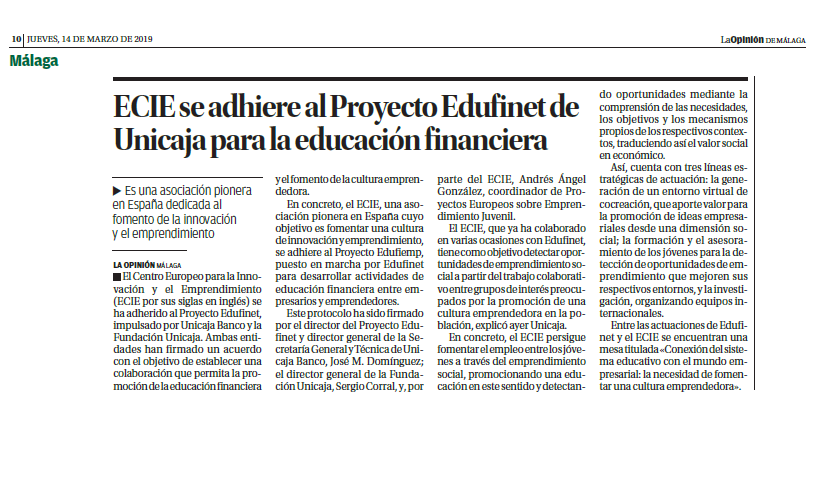
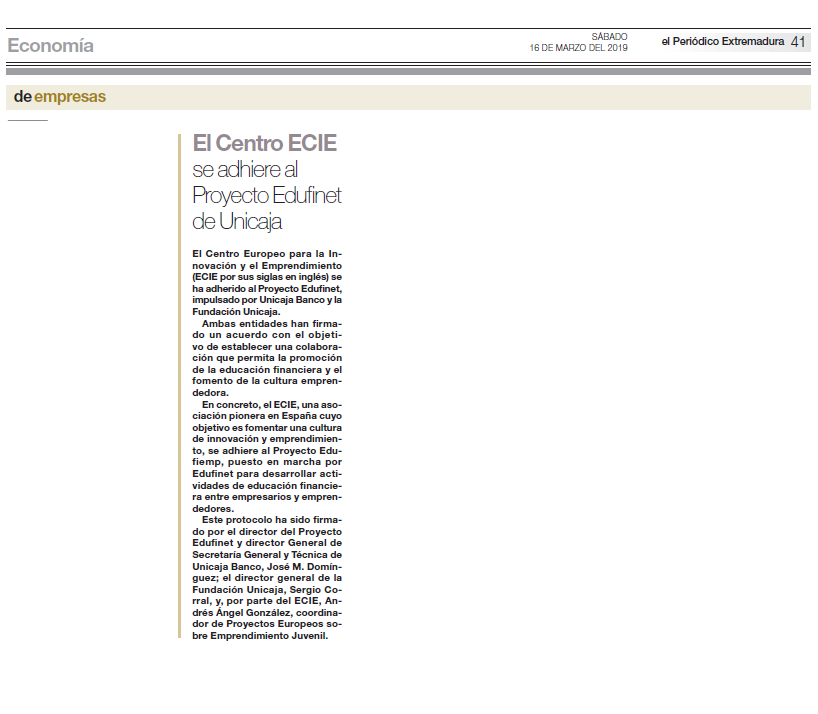
Impact of Edufinet Congress in the Mass media

This congress had a very important impact in internacional especialized Mass Media and regional newspapers like we can see in this links
10 de noviembre de 2018
- La Nueva Crónica . 10 de noviembre de 2018
- La Opinión de Málaga . 10 de noviembre de 2018
- Málaga Hoy . 10 de noviembre de 2018
- Sur . 10 de noviembre de 2018
12 de noviembre de 2018
19 de noviembre de 2018
- 20 minutos. 19 de noviembre de 2018
- Europa Press. 19 de noviembre de 2018
- Futuro a fondo. 19 de noviembre de 2018
- Gente en Málaga. 19 de noviembre de 2018
- La Nueva Crónica. 19 de noviembre de 2018
- Teleprensa. 19 de noviembre de 2018
- Zamora 24 horas. 19 de noviembre de 2018
20 de noviembre de 2018
- La Opinión de Málaga (Digital). 20 de noviembre de 2018
- El Correo de Zamora . 20 de noviembre de 2018
- La Nueva Crónica . 20 de noviembre de 2018
- La Opinión de Málaga . 20 de noviembre de 2018
- Sur . 20 de noviembre de 2018
- Sur Digital. 20 de noviembre de 2018
- Viva . 20 de noviembre de 2018
21 de noviembre de 2018
22 de noviembre de 2018
- Agencia EFE. 22 de noviembre de 2018
- Bolsamanía. 22 de noviembre de 2018
- Crónica de Cantabria. 22 de noviembre de 2018
- Diario de León. 22 de noviembre de 2018
- Diario Siglo XXI. 22 de noviembre de 2018
- El Diario Vasco. 22 de noviembre de 2018
- El Economista. 22 de noviembre de 2018
- El Economista . 22 de noviembre de 2018
- El Obrero. 22 de noviembre de 2018
- Eldiario.es . 22 de noviembre de 2018
- Es investing . 22 de noviembre de 2018
- Europa press . 22 de noviembre de 2018
- Europa press. 22 de noviembre de 2018
- Europa press. 22 de noviembre de 2018
- Expansión . 22 de noviembre de 2018
- Expansión . 22 de noviembre de 2018
- Finanzas. 22 de noviembre de 2018
- Finanzas . 22 de noviembre de 2018
- Futuro a fondo. 22 de noviembre de 2018
- Gente Digital. 22 de noviembre de 2018
- Gente Digital. 22 de noviembre de 2018
- Globalnews. 22 de noviembre de 2018
- Hoy es. 22 de noviembre de 2018
- La Razón. 22 de noviembre de 2018
- La Rioja. 22 de noviembre de 2018
- Murcia Diario. 22 de noviembre de 2018
- Navarra Información. 22 de noviembre de 2018
- Noticias Interbusca. 22 de noviembre de 2018
- Profesionales hoy. 22 de noviembre de 2018
- Sur Digital. 22 de noviembre de 2018
- Te interesa. 22 de noviembre de 2018
- Teleprensa. 22 de noviembre de 2018
- Yahoo finanzas. 22 de noviembre de 2018
23 de noviembre de 2018
- 20 minutos. 23 de noviembre de 2018
- Estrategias de inversión. 23 de noviembre de 2018
- Europa press. 23 de noviembre de 2018
- Europa press . 23 de noviembre de 2018
- Gente Digital. 23 de noviembre de 2018
- Teleprensa. 23 de noviembre de 2018
- 24 de noviembre de 2018
- La Opinión de Málaga. 24 de noviembre de 2018
30 de noviembre de 2018
- 20 minutos. 30 de noviembre de 2018
- Cope. 30 de noviembre de 2018
- Estrategias de Inversión. 30 de noviembre de 2018
- Europa Press. 30 de noviembre de 2018
- Europa Press. 30 de noviembre de 2018
- Expansión. 30 de noviembre de 2018
- Finanzas.com. 30 de noviembre de 2018
- Gente Digital. 30 de noviembre de 2018
- Infobolsa.es. 30 de noviembre de 2018
- Interbusca. 30 de noviembre de 2018
- Seriejoven.com. 30 de noviembre de 2018
- Teinteresa.es. 30 de noviembre de 2018
1 de diciembre de 2018
- Diario de León. 1 de diciembre de 2018
- El Correo de Zamora. 1 de diciembre de 2018
- La Nueva Crónica. 1 de diciembre de 2018
- La Opinión de Málaga. 1 de diciembre de 2018
- Sur. 1 de diciembre de 2018
C2 Budapest: Congress in Mass Media
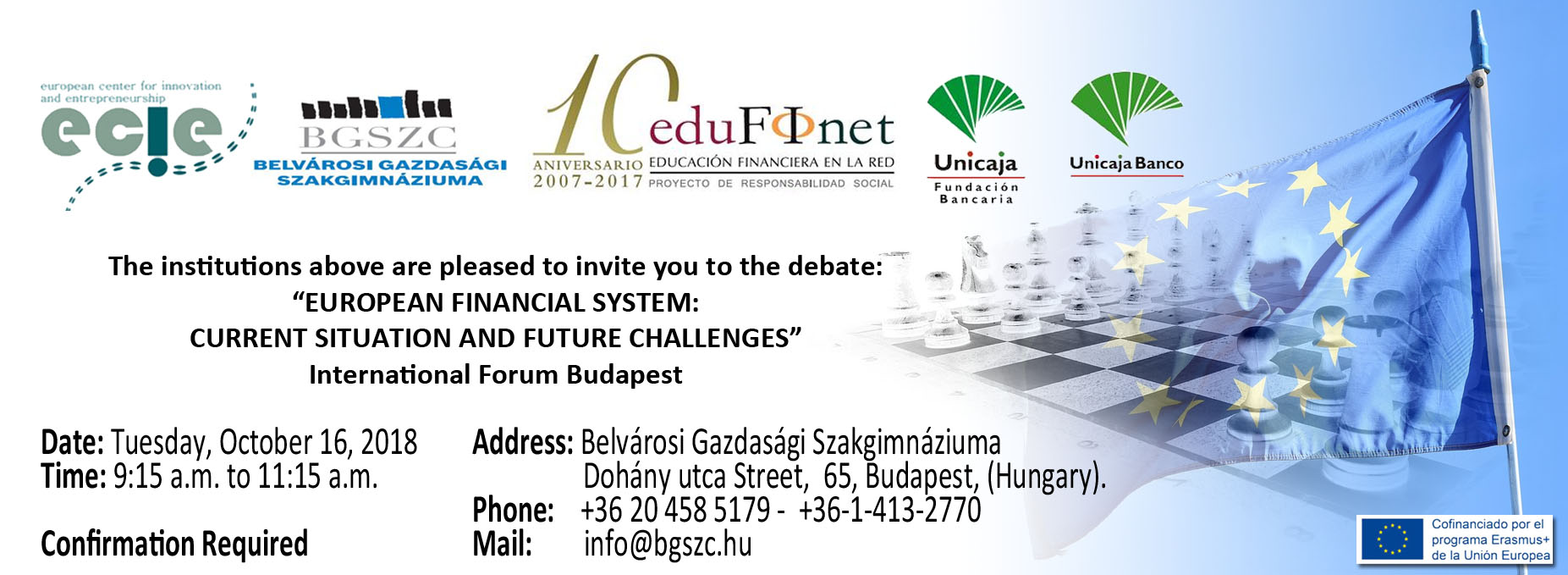
- http://www.edufinet.com/budapest
- https://www.europapress.es/andalucia/fundacion-unicaja-01059/noticia-edufinet-proyecto-unicaja-educacion-financiera-participa-budapest-foro-internacional-20181024123132.html
- https://salamancartvaldia.es/not/192690/proyecto-edufinet-unicaja-participa-budapest-foro-internacional/
- https://www.lanuevacronica.com/el-proyecto-edufinet-participa-en-budapest-en-un-foro-de-escuelas-europeas
- http://www.gentedigital.es/sevilla/noticia/2500525/edufinet-proyecto-de-unicaja-sobre-educacion-financiera-participa-en-budapest-en-un-foro-internacional/
- https://noticiasbancarias.com/bancos/25/10/2018/el-proyecto-edufinet-de-unicaja-participa-en-un-foro-en-budapest/167340.html
- http://www.malagactualidad.es/teletipos/item/20543-el-proyecto-edufinet-de-unicaja-participa-en-budapest-en-un-foro-internacional-de-escuelas-europeas.html
- https://www.diariosur.es/malaga-capital/proyecto-financiero-edufinet-20181026000412-ntvo.html
- https://www.banca15.com/secciones/Bancos/6950/el-proyecto-edufinet-de-unicaja-en-budapest.html
- http://www.finanzas.com/noticias/economia/20181024/economia-finanzas-edufinet-proyecto-3932692_age.html
- http://www.teinteresa.es/dinero/finanzas/Edufinet-Unicaja-financiera-participa-Budapest_0_2112388879.html
- https://www.bolsamania.com/noticias/mercados/economiafinanzas–edufinet-proyecto-de-unicaja-sobre-educacion-financiera-participa-en-un-foro-en-budapest–3557195.html
- http://www.expansion.com/agencia/europa_press/2018/10/24/20181024134411.html
- https://www.lavanguardia.com/local/sevilla/20181024/452533504063/edufinet-proyecto-de-unicaja-sobre-educacion-financiera-participa-en-budapest-en-un-foro-internacional.html
- http://zamora3punto0.com/el-proyecto-edufinet-de-unicajaparticipa-en-budapest-en-un-foro-internacional-de-escuelas-europeas/
